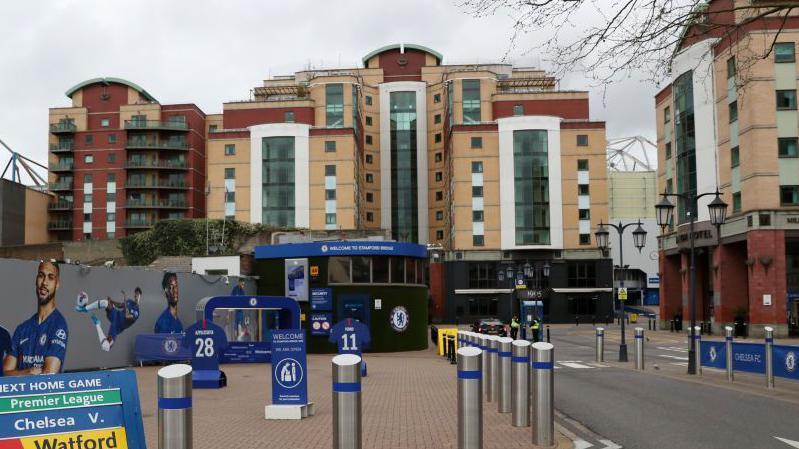
-
-
616 Comments
From next season, Premier League clubs will be prohibited from selling assets such as hotels and women’s teams to themselves in order to circumvent new financial regulations.
This decision follows a narrow vote on a new Financial Fair Play (FFP) framework based on squad expenditures that took place on Friday.
The clubs convened in London to evaluate three potential approaches to replacing Profit and Sustainability Rules (PSR).
The Squad Cost Ratio (SCR) received 14 votes in favor and six against, meeting the required minimum for a rule modification.
From the 2026-27 season onward, total squad expenditures must not exceed 85% of a club’s revenue, while teams in European competitions will have to comply with Uefa’s 70% cap.
Squad costs encompass player and manager salaries, transfer costs, and agent fees.
This significant change will close the loophole that allowed the sale of capital assets, such as hotels and women’s teams.
Last year, Chelsea transferred ownership of two hotels to a sister organization to maintain PSR compliance.
In July, Everton sold their women’s team to their parent company, and reports indicate Aston Villa plans to do the same.
The evaluation will solely consider a club’s total revenue from football activities.
The sustainability regulations, which outline financial planning over the short, medium, and long-term, were approved unanimously.
However, the anchoring proposal, intended to limit spending based on the earnings of the lowest-placed club, failed to gain sufficient backing, receiving twelve votes against, seven in favor, and one abstention.
«The newly established SCR framework aims to create opportunities for all clubs to aspire towards greater achievement and aligns the league’s financial structure with Uefa’s current SCR regulations,» read a statement from the Premier League.
«Notable aspects of the league’s updated system include clear in-season oversight and penalties, safeguards against sporting underperformance, the ability to spend in advance of revenues, enhanced capacity for off-pitch investment, and simplified processes focusing on football costs.»
What is the Squad Cost Ratio and what impacts will it have on clubs?
While PSR focused on a club’s overall balance sheet across a three-year timeframe, SCR evaluates team expenses on a seasonal basis.
The new regulations will establish a dual-system approach, mandating clubs in European tournaments to adhere to Uefa’s SCR limit of 70%—thus a club may face Uefa penalties while being compliant within the Premier League.
This higher threshold aims to safeguard the competitive equilibrium of the Premier League in light of the increased earnings allocated to clubs participating in Europe.
Chelsea and Aston Villa faced substantial fines from Uefa for infractions during the 2024-25 season when the European cap was set at 80%.
The Premier League also introduced flexibility with a multi-year cumulative allowance of 30%, enabling clubs to spend beyond this threshold. This feature permits clubs to invest in advance of revenue and accommodate for variances or underperformance in sports.
A review occurs each March, with the allowance being pivotal in determining potential competitive penalties for that season.
The 85% threshold is identified as the Green Threshold—exceeding this incurs a financial penalty, albeit significantly milder than those imposed by Uefa.
The Red Threshold sits at 85% along with the allowance—exceeding it results in a predetermined deduction of six points, which increases by one point for every £6.5m spent over this limit.
To illustrate, every club will commence the next season with an allowance of 115%, considering the 85% threshold supplemented by a 30% leeway.
Any club exceeding 85% will incur a fine, but only those surpassing 115% will face point deductions.
These figures will be revised for the 2027-28 season.
If a club’s squad expenditure hits 105% next season, they will have utilized 20% of their allowance; consequently, their maximum permissible expenditure before facing sanctions in 2027-28 will fall to 95%.
Should a club spend less than 85%, they may replenish their allowance back up to the maximum 30% again.
Which clubs will be impacted?
Several clubs, maintaining strong financial positions, supported PSR and sought to preserve the existing framework.
SCR won’t cause concern for the largest clubs with the strongest commercial operations.
However, tying wage expenses to income is not appealing to clubs with limited financial capabilities.
This is why clubs such as Bournemouth, Brentford, Brighton, Crystal Palace, Fulham, and Leeds opposed the changes.
Bournemouth’s stadium holds just over 11,000 seats, yet they must meet Premier League salary demands, potentially placing them at a disadvantage, similar to Fulham.
Prudent transfer strategies will be vital for these teams; Bournemouth remains safe this season thanks to their transfer activities last summer.
Nevertheless, the 85% limit alongside the additional 30% buffer offers every club some latitude and time to adjust.
Aston Villa and Newcastle also expressed frustration over how PSR limited their squad investment capacity. Yet they must not become overly enthusiastic about the SCR transition, as they too are bound by a 70% ratio due to Uefa participation.
What was the reason for voting down anchoring?
With just seven votes supporting, it was far from becoming a practical option, despite division among the top clubs.
Manchester City and Manchester United were concerned they could eventually breach the anchoring limit as their income grows, although Arsenal and Liverpool favored the proposal.
Top-to-bottom anchoring (TBA) would cap total expenditures to five times the television revenue allocated to the bottom-placed club in the Premier League.
This season, it is projected that the club finishing last will receive around £120 million, resulting in an upper anchoring limit of £600 million.
However, under the SCR regulations, no club’s expenditure ceiling would reach £600 million.
The intention was to prevent top clubs’ spending from continually surpassing that of others as their income increases.
Still, some worried the cap could hinder their competitiveness in acquiring players compared to clubs like Real Madrid.
The Professional Footballers’ Association (PFA) had cautioned earlier that teams might reduce player salary expenditures, effectively instituting a wage ceiling that could lead to legal challenges.
Additionally, concerns were raised that decreased future broadcasting deals might ultimately lead to a lower cap.
What led to the easy passing of sustainability regulations?
This aspect was straightforward for Premier League clubs, as they are already required to generate financial forecasts for the short, medium, and long-term.
This will become a necessity of the Independent Football Regulator (IFR), which will commence its operations later this season.
Clubs must provide projections related to their financial strategies and their capacity to sustain club operations.
The emphasis focuses on monitoring and enforcing measures to restore compliance following any breach.
This might involve implementing spending limitations or rebalancing debt.
Related topics
- Premier League
- Football
-
Receive news, insights, and fan opinions on your Premier League club
-
17 October

-
-
All football quizzes in a single location

Further information on this article
-
Premier League index
-
Premier League standings
-
Upcoming Premier League matches








